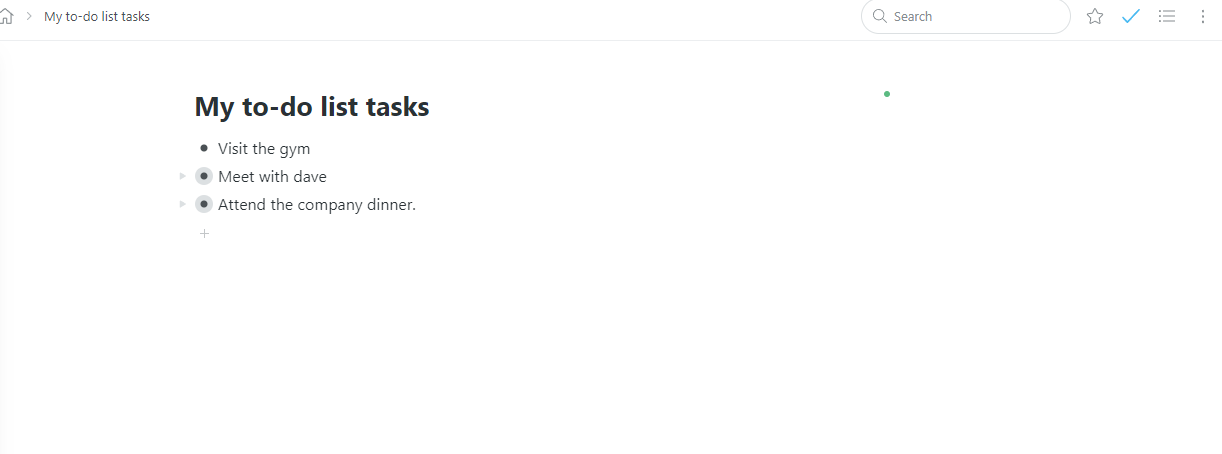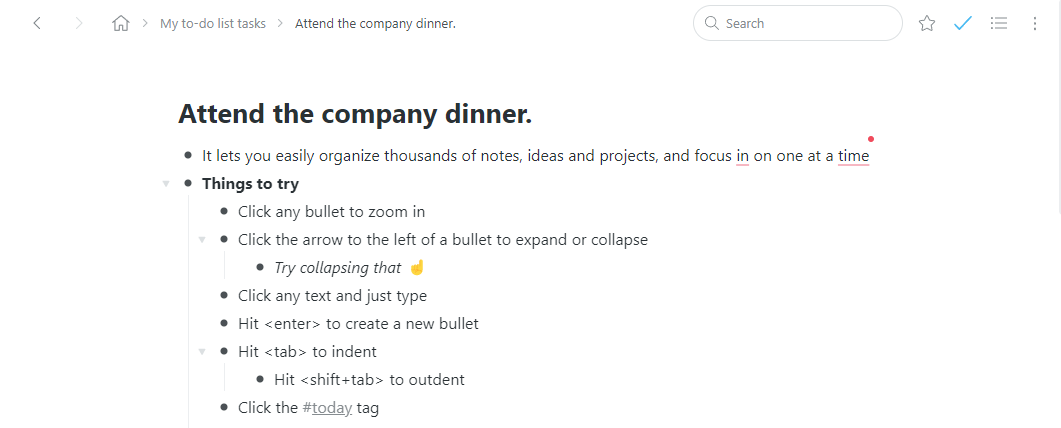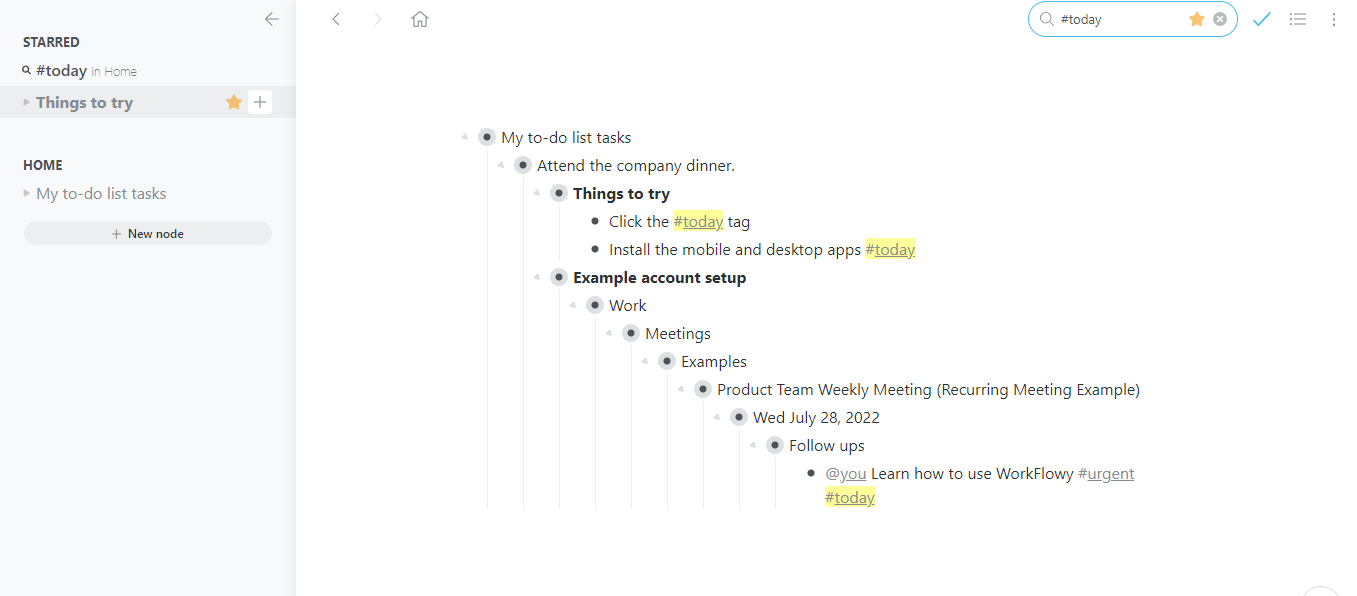WorkFlowy
Two entrepreneurs, Mike Turitzin and Jesse Patel, created WorkFlowy in 2010 to help people manage and organize their tasks. They came up with the idea at a startup camp held by Y Combinator, one of the world’s most renowned startup accelerators.
The central feature of the WorkFlowy app is its text-based nested list and the minimal yet elegant interface. This to-do list app has developed a significant fan base around the globe, now having over 2 million registered users and 15,000 paying subscribers.
We decided to see for ourselves if WorkFlowy was worth the hype surrounding it.

WorkFlowy: Plans and pricing
The WorkFlowy app is freemium. There’s a free version that anyone can sign up for but with restricted features compared to the premium version you have to pay for.
Unlike many to-do list apps, WorkFlowy has just one premium plan, and you can pay monthly or annually. It normally costs $4.99 per month, but you’ll get a 20% discount on that price if you pay for a year in one stretch.
There’s a 7-day free trial period, with no payment details required. You can always cancel your subscription at any time, but we didn’t find any official money-back guarantee policy on its website. It indicates that WorkFlowy likely doesn’t offer refunds, which we consider a disadvantage.

WorkFlowy: Features
Signing up on WorkFlowy doesn’t take much effort. All you need is a valid email, to which the platform will send a verification code to. Input the code on the sign-up page, verify it, and you’re good to go.
WorkFlowy is a pretty simple to-do list app. From your dashboard, you can add as many tasks as you want with the simple click of a button. The app’s defining feature is its text-based nested list. That is, you can add infinite loops of to-do lists under each task that you create.
For example, under a task titled “visit the gym,” you can create a to-do list specifying each exercise you want to partake in. Under each exercise on the list, you can specify which trainer you want to perform with. Under the trainer’s name, you can choose what particular time you want to exercise, and so on.
There’s no limit to the number of nested lists you can create, and this feature helps you create a solid workflow plan.
You can add tags to every task you create to help you quickly filter and visually identify them. Likewise, you can search through all your tasks easily, no matter how bulky they are.
An interesting feature we observed on WorkFlowy is the use of backlinks. When typing a to-do list, you can create links to any part of a previous to-do list. This feature helps you connect different parts of your to-do lists to create an interactive workflow.
Collaboration is another noteworthy feature we observed on WorkFlowy. You can share a link to your list, and anyone with that link can view or edit your to-do lists, depending on the permission you give them.

WorkFlowy: Interface and use
You can access WorkFlowy through the web-based interface or through the native apps for desktops (Windows, macOS, and Linux) or smartphones (iOS or Android). WorkFlowy is one of the few to-do list apps we’ve reviewed that has a native app for the Linux operating system, which is commendable.
The app’s interface is minimal to a fault. In the criterion of ease of use, we give it 5 stars.
WorkFlowy: Support
There’s a direct support email that you can contact if you encounter challenges with the app. There’s also an official help page with comprehensive user guides and frequently answered questions regarding the platform. Ideally, you should first consult this help page before seeking direct support if you don’t find satisfactory answers.
WorkFlowy: The Competition
WorkFlowy’s main competitors include Notion, Evernote, and Trello. Its primary advantage over these competitors is its stellar user interface.
WorkFlowy: Final verdict
The WorkFlowy app performs its primary function of creating and managing to-do lists excellently. The user interface is very easy to understand and makes the app enjoyable for users. The nested-list feature makes planning your workflow exciting, or at least during our product testing.
But, we observed some noteworthy drawbacks when testing the app, including being relatively expensive and having no offline access.
0 comments:
Post a Comment